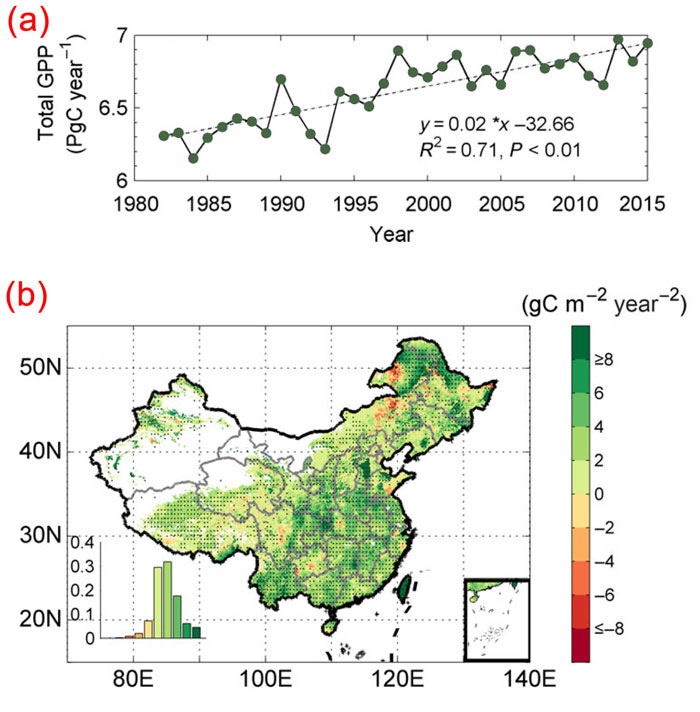| Tweet | Follow @co2science |
Paper Reviewed
Yao, Y., Wang, X., Li, Y., Wang, T., Shen, M., Du, M., He, H., Li, Y., Luo, W., Ma, M., Ma, Y., Tang, Y., Wang, H., Zhang, X., Zhang, Y., Zhao, L., Zhou, G. and Piao, S. 2018. Spatiotemporal pattern of gross primary productivity and its covariation with climate in China over the last thirty years. Global Change Biology 24: 184-196.
Climate alarmists frequently bemoan the modern rise in air temperature, claiming it is inflicting all sorts of damage on the biosphere.
But is this really the case?
Yao et al. provide a test of this hypothesis for the whole of China in a paper they published in Global Change Biology. What they did was develop a dataset of monthly gross primary productivity (GPP) over the years 1982-2015 at a spatial resolution of 0.1° based on eddy covariance flux measurements from 40 sites in China and surrounding countries. Analysis of that dataset revealed that GPP has increased in China from 6.31 PgC/year in 1982 to 6.94 PgC/year in 2015 (see Figure 1a), representing an annual increase in GPP of 0.32% and a total increase of 10.8% over the 34-year period. What is more, Yao et al. report that "positive trends [in GPP] are widespread (89.5%), and almost 60% of the study region experienced a significant increase (p < 0.05)," whereas significant decreasing GPP trends were only found in 1.1% of the study area (Figure 1b).
In searching for the driving force(s) behind the present and ongoing enhancement of GPP, the authors investigated the relationship between their GPP dataset and three climate variables, temperature, precipitation and radiation, reporting that "interannual changes of annual GPP are highly correlated with annual mean temperature (R = 0.86, p < 0.01) [whereas] lower agreement occurred between annual GPP and annual radiation (R = 0.36, p < 0.05), followed by annual precipitation (R = 0.30, p < 0.10)."
So, based on the results of the study presented above, not only is the vegetation across China in the midst of a long period of great productivity gains, those gains are primarily linked to the very factor climate alarmists contend should be causing vegetative dieback, i.e., rising temperature. Climate alarmists couldn't be more wrong!

Figure 1. Panel a: plot of annual total gross primary productivity (GPP) in China from 1982 to 2015. Panel b: spatial pattern of the temporal trend in annual GPP over the 34-year period of study. Black points denote pixels with significant linear trends of annual GPP during this time period. The inset in panel b presents the frequency distribution of pixel linear trends in annual GPP. Source: Yao et al. (2018).




